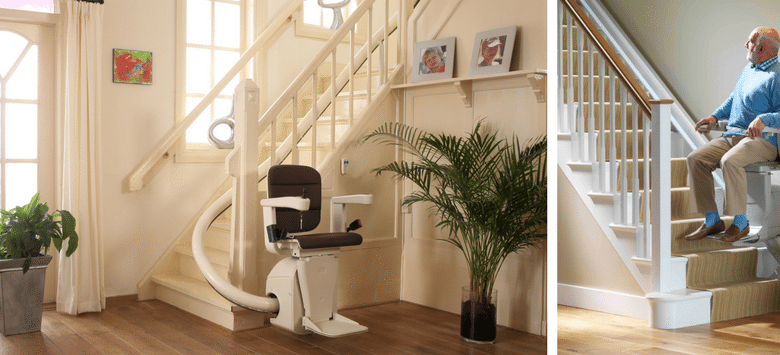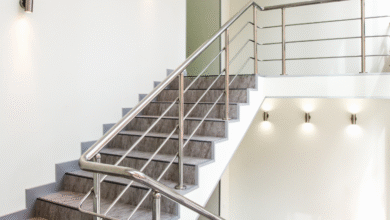Reimagining Home Accessibility: Why Stair Lifts Are Reshaping Independent Living

As society shifts toward supporting aging in place, residential design and mobility aids have begun evolving with a new purpose: preserving independence. Among the most transformative tools in this effort is the stair lift—a feature once considered niche but now becoming a staple in modern accessible living.
The integration of devices like stair lift chairs into multi-level homes is not simply about solving a problem; it’s about empowering choice, extending comfort zones, and maintaining control over personal routines. And while the decision to install a stair lift may stem from a mobility limitation, the broader impact stretches far beyond the staircase.
Independence at the Center of the Home
Mobility isn’t just physical—it’s emotional. The ability to move freely between levels of a home often represents more than access; it symbolizes autonomy, ownership, and dignity. The presence of a stair lift can preserve these values in environments where they might otherwise be threatened by aging or injury.
In two-story homes especially, transitioning to single-floor living isn’t always feasible or desirable. A stair lift installation serves as an invisible thread, stitching together the home’s full layout for those who rely on uninterrupted flow.
What’s more, this solution doesn’t impose limits on others. Unlike ramps or elevators, stair lifts occupy minimal space and leave stairs usable for all household members. That coexistence is part of what makes this solution so uniquely inclusive.
Design That Balances Safety and Subtlety
One of the understated benefits of modern stair lift technology is how well it integrates into residential aesthetics. Today’s units are sleeker, quieter, and more compact than ever. Whether it’s a curved stair lift wrapping around a sweeping staircase or a straight model mounted to a compact back stairway, form no longer sacrifices function.
Many units now include fold-away features: seats, armrests, and footplates that retract when not in use. This ensures that the lift doesn’t obstruct normal foot traffic, especially in shared households.
Beyond design, safety is woven into every operational element. Pressure sensors, slow start-stop movement, and battery-powered motors ensure smooth, secure rides—essential components for both user confidence and family reassurance.
The Rise of Customized Mobility
As the demand for aging-in-place solutions increases, stair lift technology has become more user-centric. Instead of one-size-fits-all models, today’s stair lifts can be tailored to meet highly specific needs. This includes adjustable seat heights, swivel mechanisms, and joystick or remote-controlled options for those with dexterity limitations.
Products like the Bruno stair lift, for example, are often selected for their rugged reliability and customizable build options. These models are particularly well-regarded for their durability and ergonomic features, making them a preferred choice among both mobility consultants and users alike.
This move toward tailored accessibility allows stair lifts to transcend their clinical origins. They’re no longer simply tools—they’re personalized extensions of the user’s lifestyle and environment.
Going Beyond the Private Residence
While stair lifts have long been popular in personal homes, they are also proving valuable in other contexts. Small business offices, multi-unit buildings, and even historic venues are adopting these systems to meet both regulatory accessibility standards and the human need for inclusivity.
In these settings, stair lift installation is not just a matter of convenience—it’s a commitment to serving a wider audience. Whether it’s a community center enabling seniors to access workshops or a public library bridging floors for visitors, stair lifts are helping shape more universally accessible spaces.
Such installations also allow organizations to avoid costly structural changes while still addressing essential mobility needs, demonstrating how practical and adaptive these solutions can be.
Maintenance: Low Effort, Long Life
Despite their advanced features, stair lifts require surprisingly minimal upkeep. Most models operate on rechargeable batteries that ensure continued function even during power outages. Routine maintenance—typically limited to track cleaning and battery health checks—can be scheduled annually.
Troubleshooting is straightforward. Error codes on the unit’s interface often point directly to any issues, and service technicians can usually resolve problems in a single visit. This reliability makes stair lifts one of the most hassle-free long-term mobility investments.
Furthermore, many manufacturers and installers offer multi-year warranties, and customer support often includes guidance on usage best practices to prolong the life of the unit.
Mythbusting Common Misconceptions
There are still several myths surrounding stair lifts. Some believe they damage walls or require structural alterations, while others assume they’re only for the elderly. In reality, stair lifts are mounted to stair treads—not walls—making installation quick and non-invasive.
And their utility spans a wide demographic. People recovering from surgery, individuals with chronic conditions, or caregivers assisting disabled family members can all benefit from stair lift systems.
Additionally, there’s a notion that stair lifts reduce home value. In fact, the opposite is often true for buyers seeking multi-generational or accessible housing. Having a stair lift already installed can be a major selling point—especially when the installation is modern, functional, and unobtrusive.
Planning with the Future in Mind
The decision to install a stair lift doesn’t always come in the midst of a crisis. Increasingly, families are choosing to invest in mobility enhancements early—planning proactively rather than reactively.
When choosing a provider like Stairlift Virginia, homeowners benefit from professional insight into which models best suit their home’s structure and the user’s evolving needs. This kind of foresight can prevent rushed decisions later on, when time or budget may be tighter.
With society gradually shifting toward greater support for independent living, forward-thinking mobility planning is becoming part of responsible homeownership.
A New Standard for Accessibility
The home of the future is one that adapts as its occupants change—not the other way around. And stair lifts are emblematic of that flexibility. They’re designed not to dominate space but to support freedom within it. That’s a subtle yet powerful shift in how we view accessibility.
Far from being a symbol of limitation, a stair lift has become a modern-day marker of thoughtful, inclusive design—ensuring that all levels of a home remain accessible, enjoyable, and useful.
For those seeking guidance on these solutions, companies like Stairlift Virginia are helping bridge the gap between functionality and peace of mind, offering mobility options that work as quietly and efficiently as the homes they serve.




